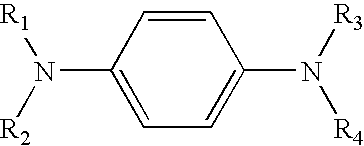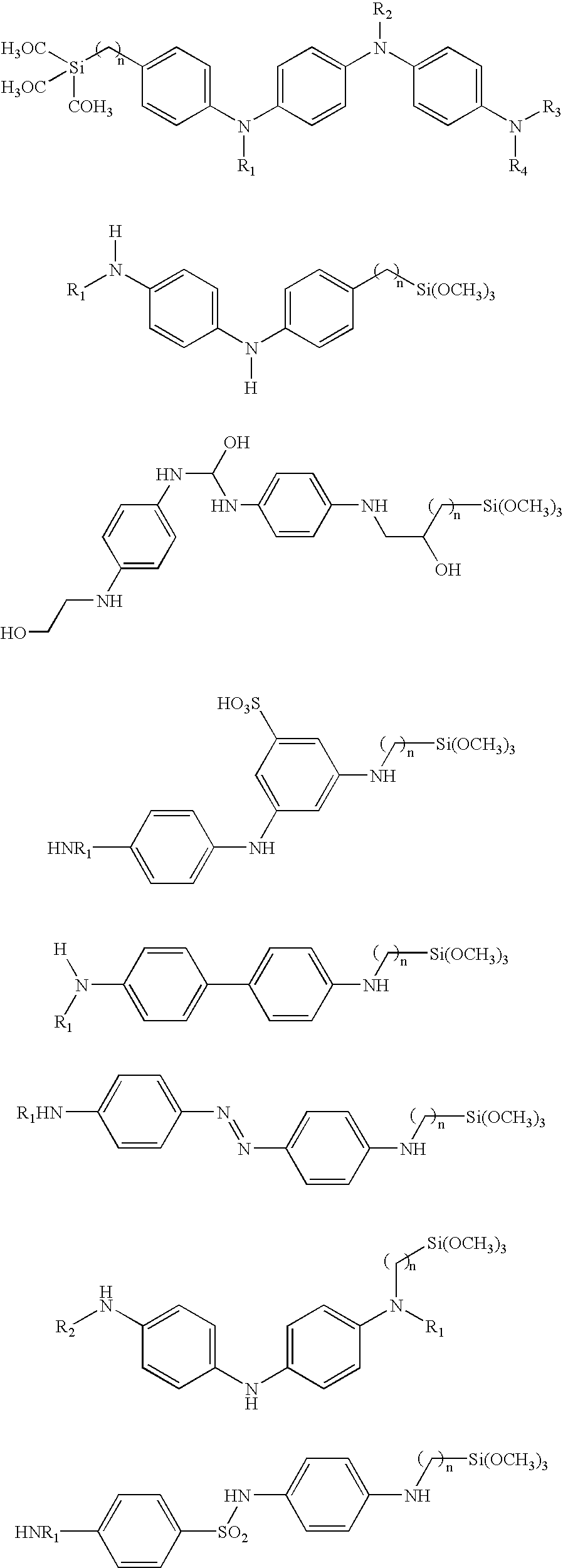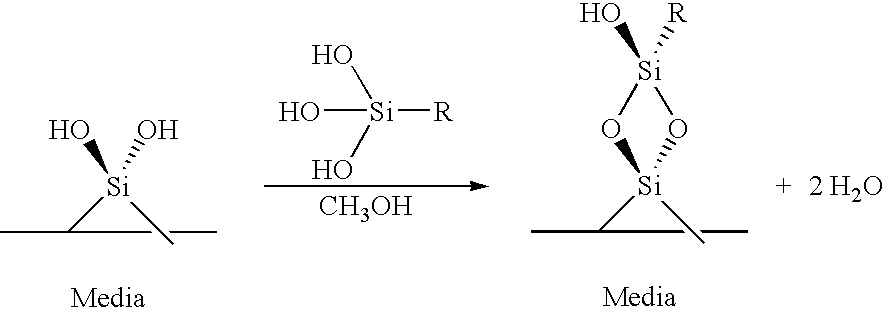Anti-ozonants covalently attached to silica gel for use in glossy print media
a technology of anti-ozonants and silica gel, which is applied in the direction of transportation and packaging, natural mineral layered products, and cellulosic plastic layered products, etc., can solve the problem of not being the subject of much investigation in preventing oxidation by ozonation
- Summary
- Abstract
- Description
- Claims
- Application Information
AI Technical Summary
Benefits of technology
Problems solved by technology
Method used
Image
Examples
Embodiment Construction
It is well known in the plastics and rubber technologies fields that phenylenediamines (PDAs) and like amines are excellent ozonolysis inhibitors. They react with ozone and other oxidants at a much faster rate than the unsaturated links in the polymer and afford protection to the polymer from these oxidants. They have the following structure: ##STR1##
where R.sub.1, R.sub.2, R.sub.3, and R.sub.4 are independently alkyl, aryl, alkene, or arene groups, branched chain or straight chain or any combination thereof, comprising 30 carbon atoms or less, with the proviso that while any two R groups can be aryl, there are no more than two aryl groups. Of the alkyl groups, the secondary alkyls (2-alkyls or iso-alkyls) are most effective in preventing ozone degradation.
The rates of reaction of a variety of compounds, including three derivatives of phenylenediamine (PDA), with ozone are summarized in the Table below:
It is seen that the PDA derivatives react with ozone considerably faster than oth...
PUM
| Property | Measurement | Unit |
|---|---|---|
| concentrations | aaaaa | aaaaa |
| structure | aaaaa | aaaaa |
| temperature | aaaaa | aaaaa |
Abstract
Description
Claims
Application Information
 Login to View More
Login to View More - R&D
- Intellectual Property
- Life Sciences
- Materials
- Tech Scout
- Unparalleled Data Quality
- Higher Quality Content
- 60% Fewer Hallucinations
Browse by: Latest US Patents, China's latest patents, Technical Efficacy Thesaurus, Application Domain, Technology Topic, Popular Technical Reports.
© 2025 PatSnap. All rights reserved.Legal|Privacy policy|Modern Slavery Act Transparency Statement|Sitemap|About US| Contact US: help@patsnap.com



